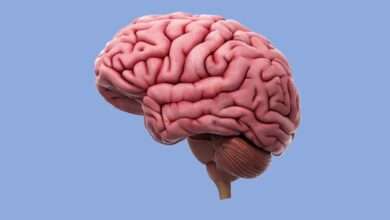
The causes of back pain
Many factors can cause back pain.
These may be traumas (shocks, fractures, sprains, etc.), repeated movements (manual handling, vibrations, etc.), osteoarthritis, but also cancerous, infectious or inflammatory diseases. It is therefore difficult to address all the possible causes, but note that:
In 90 to 95% of cases, the origin of the pain is not identified and we speak of “common or non-specific spinal pain”. The pain then comes, in most cases, from lesions at the level of the intervertebral discs or vertebral osteoarthritis, that is to say from wear of the cartilage of the joints. Neck pain, in particular, is very often linked to osteoarthritis.
In 5 to 10% of cases, back pain is linked to a potentially serious underlying disease, which must be diagnosed early, such as cancer, infection, ankylosing spondylitis, cardiovascular or pulmonary problem, etc. .
To determine the cause of back pain, doctors give importance to several criteria :
- the seat of pain;
- the mode of onset of the pain (gradual or sudden, following a shock or not, etc.) and its evolution;
- whether the pain is inflammatory or not. Inflammatory pain is characterized by nocturnal pain, rest pain, nocturnal awakenings and a possible feeling of stiffness in the morning on rising. In contrast, purely mechanical pain is rather aggravated by movement and relieved by rest;
- medical history.
As back pain is “non-specific” in the majority of cases, imaging tests such as X-rays, CT scans or MRIs are not always necessary.
Here are some other diseases or factors that can be responsible for back pain :
- ankylosing spondylitis and other inflammatory rheumatic diseases;
- vertebral fracture;
- osteoporosis;
- lymphoma;
- infection (spondylodiscite) ;
- “intra-spinal” tumor (meningioma, neuroma), primary bone tumors or metastases;
- spinal deformity.
Back pain : in addition to the causes listed below, pain in the middle of the back can potentially be linked to something other than a spinal problem, in particular a visceral disorder and should lead to a consultation quickly.
They can thus be the result of a cardiovascular disease (infarction, aortic aneurysm, aortic dissection), a pulmonary or digestive disease (gastric or duodenal ulcer, pancreatitis, cancer of the esophagus, stomach or pancreas).
Low back pain: low back pain can also be linked to a kidney, digestive, gynecological, vascular disorder…
Back pain: evolution and possible complications
The complications and evolution obviously depend on the cause of the pain.
When it comes to back pain without underlying disease, the pain can be acute (4 to 12 weeks), and resolve in a few days or weeks, or be chronic (when it lasts more than 12 weeks).
There is a significant risk of “chronicization” of back pain. It is therefore important to consult your doctor quickly to prevent the pain from becoming permanent. However, several tips can help limit this risk (see the Low back pain and neck muscle disorders sheets).




